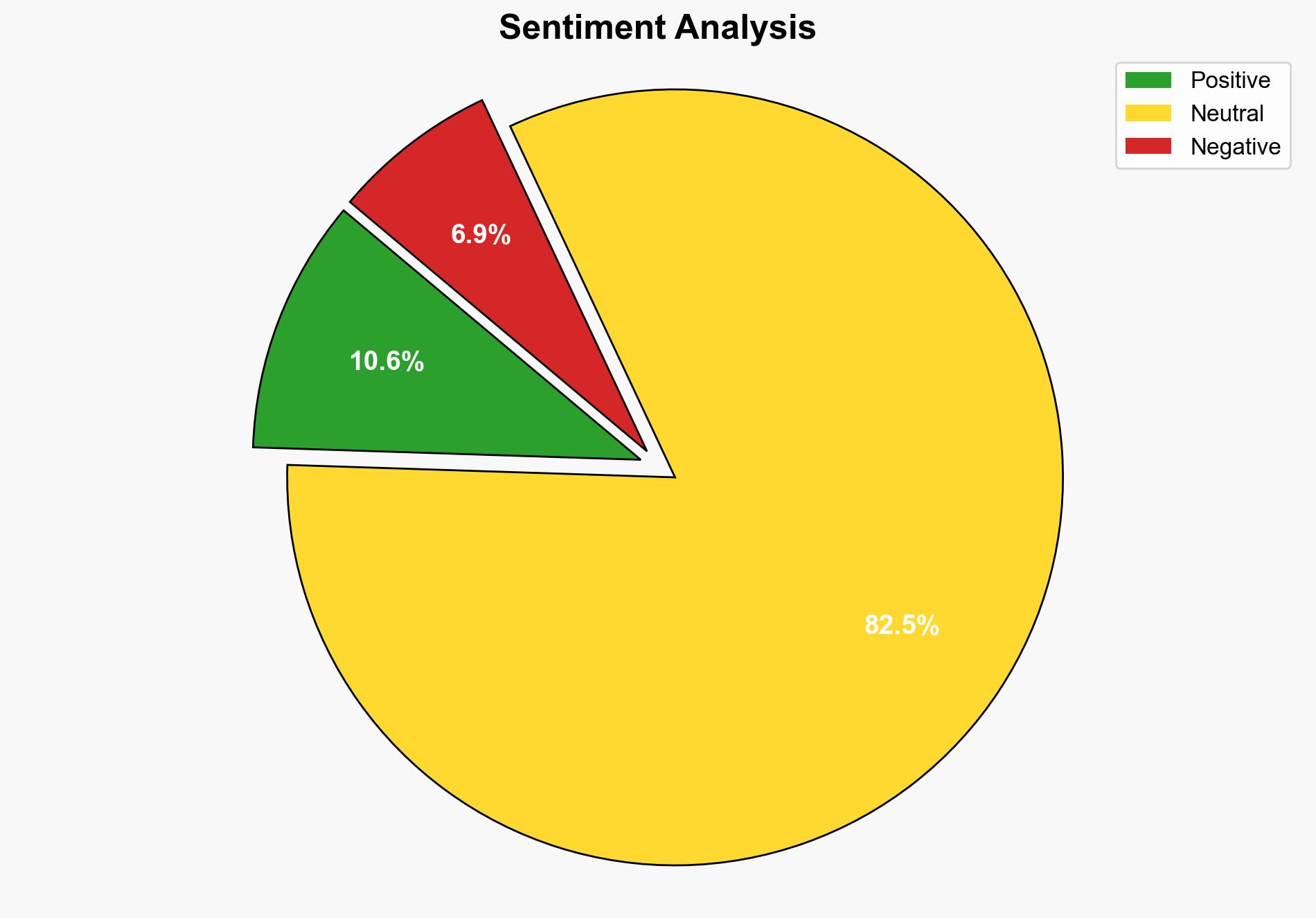From 400 Mbps to 17 Gbps A WiFi 7 Debugging Journey – Tymscar.com
Published on: 2025-11-01
Intelligence Report: From 400 Mbps to 17 Gbps A WiFi 7 Debugging Journey – Tymscar.com
1. BLUF (Bottom Line Up Front)
The analysis indicates that the primary issue in achieving expected WiFi 7 speeds was related to improper configuration of channel width and transmit power settings. The hypothesis that configuration errors were the root cause is better supported by the data. Confidence level: Moderate. Recommended action: Ensure proper configuration settings and conduct thorough testing using appropriate tools and methodologies to optimize network performance.
2. Competing Hypotheses
1. **Configuration Errors Hypothesis**: The primary cause of suboptimal WiFi performance was due to incorrect configuration settings, specifically related to channel width and transmit power.
2. **Hardware/Software Limitation Hypothesis**: The performance issues were due to inherent limitations in the hardware or software, such as the capabilities of the iPhone or the Unifi Dream Router.
Using Analysis of Competing Hypotheses (ACH), the Configuration Errors Hypothesis is better supported as adjustments to the channel width and power settings led to significant improvements in speed, aligning with expected performance metrics.
3. Key Assumptions and Red Flags
– **Assumptions**: It is assumed that the testing environment was controlled and that no external interferences affected the results. It is also assumed that the testing equipment and software were functioning correctly.
– **Red Flags**: There is a potential cognitive bias in attributing issues solely to configuration without considering hardware limitations. The lack of initial consideration for channel width settings indicates a possible oversight.
– **Missing Data**: Detailed specifications of the testing environment and any potential external interferences are not provided.
4. Implications and Strategic Risks
– **Economic**: Poor network performance can lead to reduced productivity and increased operational costs for businesses relying on high-speed internet.
– **Cyber**: Misconfigurations can expose networks to vulnerabilities, increasing the risk of cyber attacks.
– **Geopolitical**: As WiFi 7 becomes more widespread, nations may face pressure to upgrade infrastructure, impacting international technology competitiveness.
– **Psychological**: Users may experience frustration and loss of trust in technology providers if performance issues persist.
5. Recommendations and Outlook
- Conduct comprehensive training for network administrators on optimal configuration settings for WiFi 7.
- Implement routine audits and testing to ensure network settings are optimized and secure.
- Scenario Projections:
- Best: All configurations are optimized, leading to enhanced network performance and user satisfaction.
- Worst: Persistent misconfigurations lead to security breaches and significant operational disruptions.
- Most Likely: Incremental improvements in performance as configurations are optimized over time.
6. Key Individuals and Entities
– No specific individuals are mentioned in the source text.
7. Thematic Tags
national security threats, cybersecurity, technology optimization, network performance




